

- 2473 read by
- 24.06.2025 09:39
Azerbaijan Carpets 101: History, Types, and Buying Tips
It is, in truth, very challenging to find anything (or rather, true information) on Azerbaijan carpets on the Web.
With this in mind, I’ve looked in every possible source, including Google.
Nada came up.
So, if you want to learn:
A bit of history about Azerbaijan rugs;
Their types, patterns and ornaments;
Tips on where to buy them, and so on;
You’ll find here everything you need concisely on this topic.
Let’s start.
Quick Recap of the History of Azerbaijan Carpets
Generally speaking, the history of carpet weaving in Azerbaijan can be divided into 4 periods, namely:
Ancient Times
Medieval Period
16th-18th Centuries
19th-20th Centuries
Archeological excavations and literary monuments prove that carpet art existed in Azerbaijan from a very long time ago.
Early Azerbaijani carpets were used for everyday things such as insulation in homes and tents, but also played a cultural and artistic role in society.
Azerbaijan was also one of the centers of both carpet and rug production during the Middle Ages.
In the 16th-18th centuries Tabriz became a major Azerbaijan carpet weaving center that influenced the style across the region.
During the 19th and 20th-century industrialization, traditional hand-weaving techniques for carpet weaving fell apart.
Note: Almost all (95%) the carpets and rugs known as Caucasus rugs come from Azerbaijan, and each one is unique.
Proof of the Antiquity of Azerbaijan Rugs by the Ancients
Indeed, even from the words of ancient historians, it follows that rugging is one of the oldest decorative art groups in Azerbaijan.
Many of you may think I am exaggerating.
But let's take a look at what the ancients said about the carpets and decorative art here.
Herodotus, for example, said the following about the decorative art in the Land of Fire:
“They say that in this Land (Azerbaijan) there are trees whose leaves are strange. They crush these leaves with a stone and mix them with water in order to get dyes, with which they embroider their clothes. The embroidery does not fade out by washing but only when the woolen fabric is torn”.
On the other hand, the 9th-century Arab historian al-Tabari said this about Azerbaijan rugs:
“In the northeast of Azerbaijan during the first half of the VII century, highly qualitative rugs and carpets had been produced (642 AD).”
The great traveler Marco Polo, who traveled around the East in the 13th century, wrote:
"Azerbaijan possesses such pieces, carpets, and rugs that have worldwide fame."
You can add the words of hundreds of names to this list.
But I think this is enough to prove how far back the history of Azerbaijan carpets goes.
Types of Azerbaijan Carpets
Depending on the method of production (manufacturing) and position of the pile, Azerbaijan carpets are divided into 2 types.
That is:
Pile-free (pileless)
Pile carpets
Traditionally, pileless carpets were woven on horizontal looms, while pile carpets were woven on vertical looms.
Pileless Azerbaijan rugs are made as a flat-woven textile with durability, featuring intricate geometrical patterns in vivid colors.
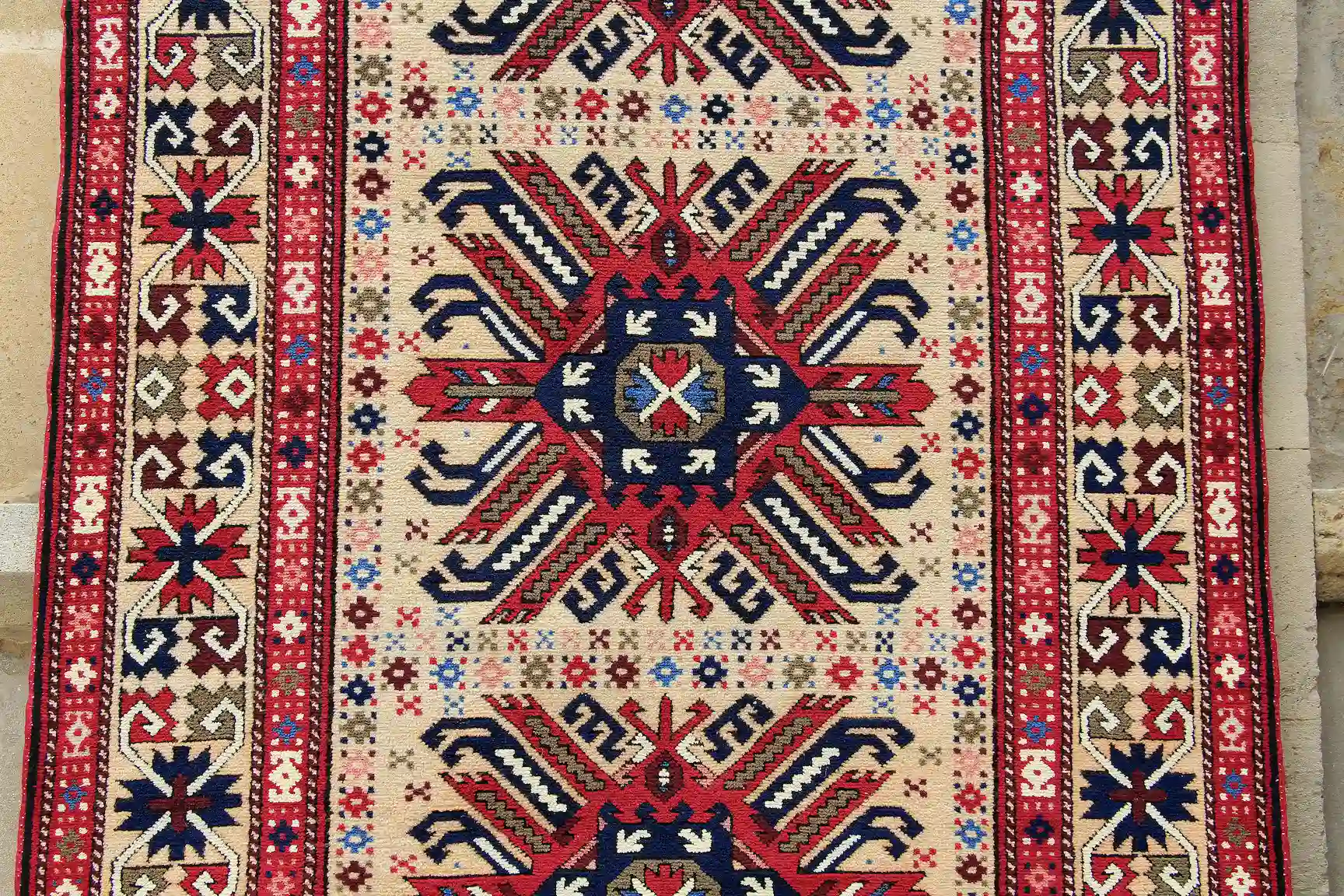
Such carpets have no knots; thus, being different from pile carpets, they are thinner and lighter.
They usually come in at least 7 different variety and were mostly used for daily basic needs:
Palas (Palaz)
Jejim (Cecim)
Shadda (Şəddə)
Kilim (Xilə)
Zili
Verni (Vərni)
Sumak (Sumax)
On the flip side, pile carpets from Azerbaijan are famous for their dense knotted design and vibrant color scheme.
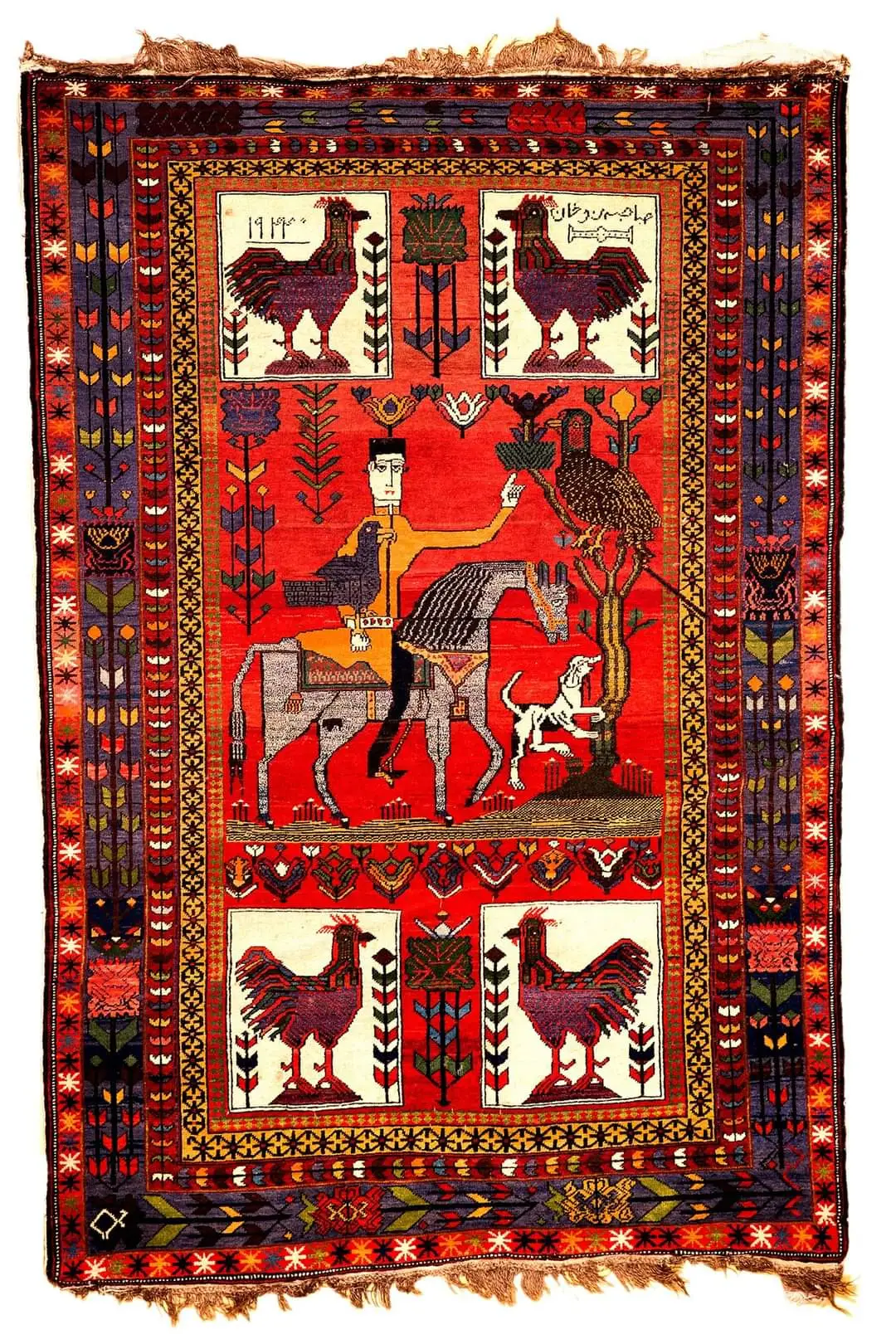
And there are two ways to weave a pile rug:
Turkish knot - Symmetrical knot where the yarn is looped around two warp threads and pulled right through the center.
Persian knot - Asymmetrical knot where the yarn wraps around one warp thread, and loosely under the other.
The Turkish Knot, also called the Gördes Knot, makes carpets dense and durable.
On the other hand, the Persian knot (Senneh knot) allows for more detailed patterns.
Popular Carpet Weaving Schools in Azerbaijan
As a kind of art, Azerbaijani carpets (pile rugs) are conventionally divided into several carpet weaving schools.
Especially based on their geographical position, pattern, composition, color scheme, and technical characteristics.
Some of the famous carpet weaving schools in Azerbaijan are:
Quba
Shirvan
Baku
Ganja
Karabakh
To make the list of Azerbaijan carpet weaving schools longer, you can add écoles like Nakhchivan, Tabriz, Ardabil, and Xalxal, etc.
But I don't want to give you a long story.
Let’s see the most popular weaving écoles.
Quba Weaving School
Quba carpets are known for their beautiful weaving and detailed geometric patterns.
They include motifs like stars, octagons, and stylized animal figures.
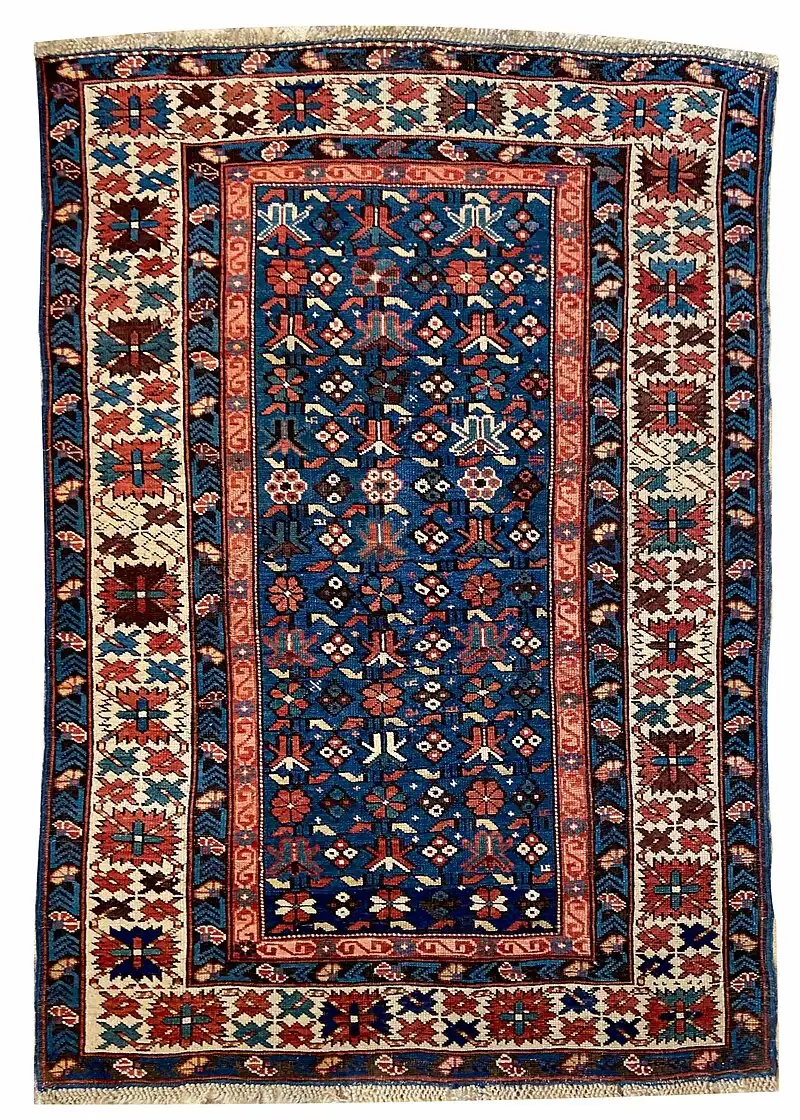
The "Ganja-Quba", "Alpan", "Khirdaghulchichi” (Xırdagülçiçi) and “Alchaghulchichi” (Alçagülçiçi) carpets woven here, as well as the "Quba Sumakhs", occupy an important place.
Shirvan Weaving School
Shirvan carpets are marked by small repetitive motifs and fine weaving of details, often featuring hexagonal medallions, intricate borders, and floral motifs.

They are also among the most popular Azerbaijani types of carpet in international markets.
Some of the carpets woven in Shirvan school are "Nabur," "Bico," "Gabistan," "Shamakhi," "Israfil," and "Arjiman".
Baku Weaving School
Large-scale geometric patterns with symmetric arrangements are the characteristics of Baku carpets, mainly in deep blue, red, and beige colors.
Variations include those with dragon motifs, reflecting ancient Azerbaijani mythology.
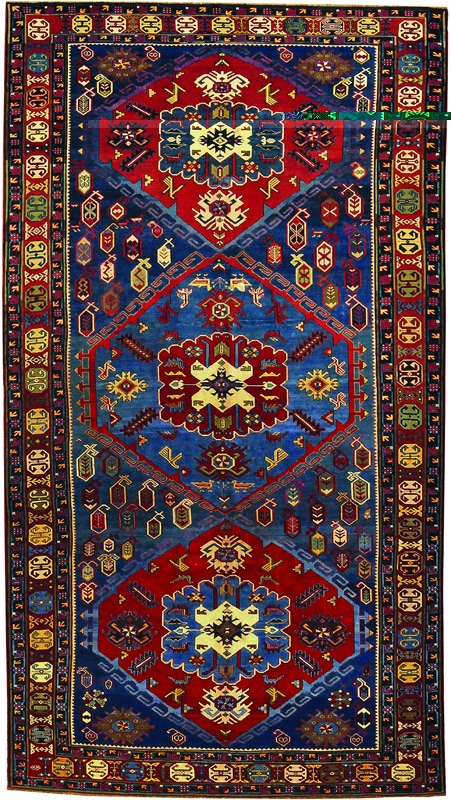
Among the best examples of this school are "Gala" and “Fatmayı” carpets.
Ganja Weaving School
Ganja weaving school's rugs are known for their strong, contrasting colors and lively designs.
They feature bold geometric shapes, zigzag lines, and stylized symbols.
People love these carpets for their visual appeal.
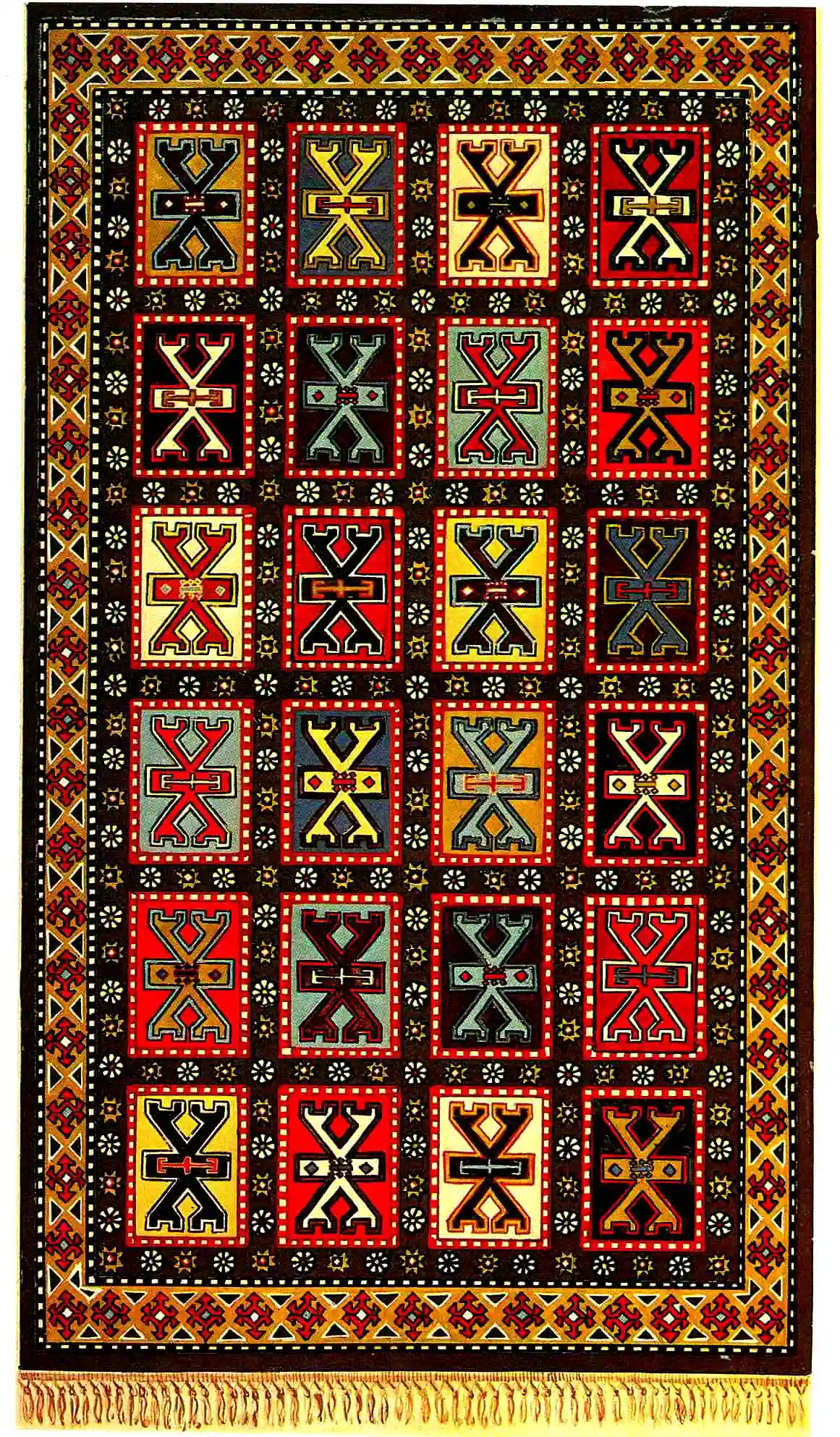
The carpets are woven here, including the popular "Old Ganja" (Qədim Gəncə) and "Samur".
Interesting fact: A pretty interesting statistic is that back in 1917, 33,069 people were weaving carpets in Ganja. That means 49% of the region's population was working in it.
Karabakh Weaving School
It is believed that the carpet art of Barda, the oldest settlement of Karabakh, moved to the city of Shusha in the second half of the 1700s and began to spread more widely there.
Because of this, most Karabakh carpets are now thought to be from Shusha.
Karabakh (Shusha) carpets are famous for their luxurious floral and figurative designs.
They often come with soft wool and very detailed ornamentation, much like Persian carpets.
Some include animal figures, while others feature garden composition.
“Malibeyli”, “Lempe”, “Bulud” are some of the carpets woven here.
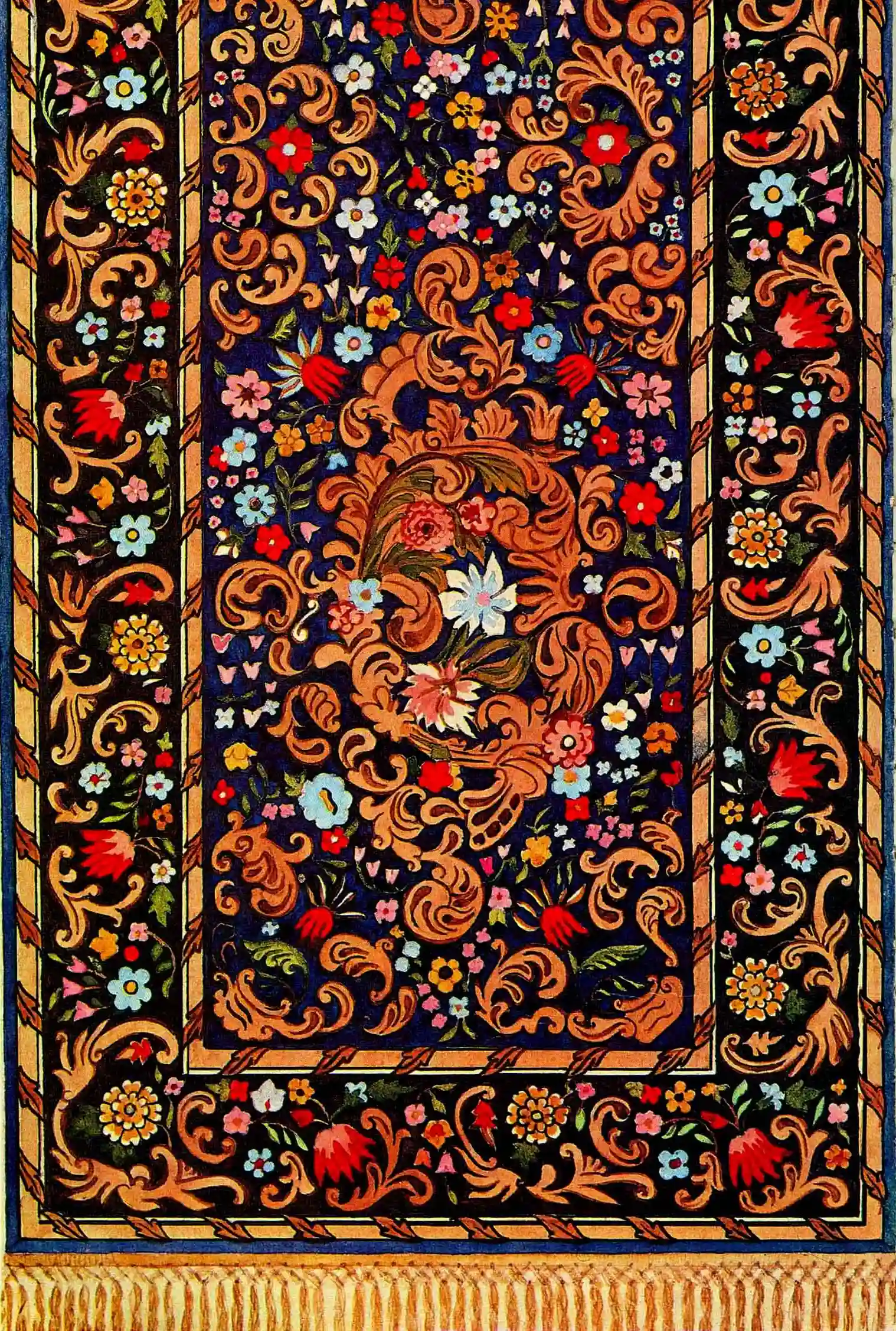
Honestly, to me, they are the most gorgeous Azerbaijan rugs.
If you're also interested in seeing these beautiful masterpieces, you should definitely check out the Carpet Museum in Baku.
It must be on your top 5 things to do in Baku list.
Azerbaijan Rugs Prices: Average Costs
Azerbaijan carpets can be very different in their price, counting on a number of factors that include size, quality, craftsmanship, age, and design.
For example, small rugs (kilims or smaller pile rugs) cost about $50 to $200 USD.
The higher-quality traditional pile rugs from regions like Ganja or Shirvan have a price of about $1,000 to $4,000.
If you want to buy antique Azerbaijani carpets, mostly those of the 19th century or earlier-you have to pay in the range of about $2,000 to $10,000.
Meanwhile, you can shop for carpets in various places like Old Town Baku, Nizami Street, and so on.
Or, you can buy Azerbaijan rugs for sale online at Azercarpet (Azerxalça).
Nonetheless, I'd recommend you ask the Azerbaijan Carpet Museum where to buy carpets in Baku.
This'll also minimize your chances of encountering a fake product.
Eventually, I hope that after reading this article, you’ll have a better understanding of Azerbaijan carpets.
I'd also love to know which are your favorite rugs - feel free to share in the comments.
For now, arrivederci!
Need help planning your Azerbaijan adventure? For online reservations, reach out to us at this number » +994 992 72 22 27.





Leave a Comment